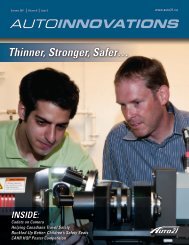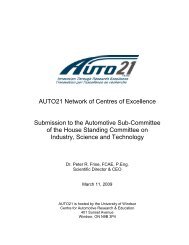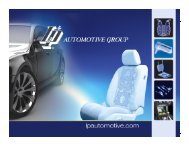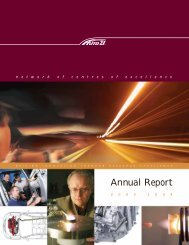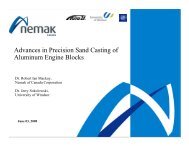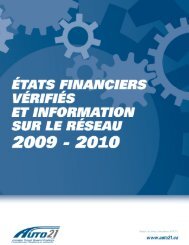You also want an ePaper? Increase the reach of your titles
YUMPU automatically turns print PDFs into web optimized ePapers that Google loves.
MontérégieNorthTorontoYorkton - MelvilleYukon TerritoryTotal212216Management of 38 parking lot sites declined to participate and therefore, thesesites did not contribute any observations. In total, there were 1697 vehicles in theparking lot data for which at least one variable was recorded and 3424 vehicleswhose drivers refused to participate in the survey and for those, driver’s gender,restraint status, number of children in the vehicle and their restraint status wererecorded.In the roadside data, there were 10084 vehicles for which at least one variable isobserved. These were collected on 184 sites out of the 200 sites sampled forthis study.Correct use of child safety seat was defined based on child's age alone, weightalone and combined age, weight and height. The definitions are displayed in thefollowing Tables B, C and D. We have not found any unified and simple criteriafor guiding parents to the correct use of safety seats for their children. Most of theguidelines found seem to have non-exclusive/non-exhaustive classes whendefining the age, weight and height groups for the various child seat types. Thiscreates either redundancy or gaps so that some children do not actually fall inany of the categories and parents are left confused. Our Table B is an efforttowards such a unified definition.Table-B: Definition of Correct safety system based on the child’s age,weight and height groups.Types of SeatVariables:Rear-facing Infant SeatForward-facingInfant SeatBooster SeatSeatbelt Only9Age, Weight and Height Groups(Age



